Chicken Rendang is a sweet-savory dish that relies on tender chicken pieces that are slow-cooked in a creamy sauce. This decadent sauce is made with coconut milk and various fresh spices and aromatics. The resulting sauce is flavorful, balanced, and nuanced with the addition of pleasantly spicy chilis. The succulent chicken pieces are coated with the luxurious sauce, making it a “dry” curry due to the slow-reduction cooking method. It is garnished with fried shallots or cilantro and embodies comfort when served the next day!
While living in Singapore, I was treated to the Chicken Rendang. I was amazed by the layered complexity of this dish. It reminded me of the South Indian masala. Still, it had a certain zing in how it was paired with the coconut rice. The whole composition came together harmoniously. It is quintessentially Southeast Asian with a unique history.
Origin:
In many ways, Southeast Asian cooking reflects the globalization that occurred in the 15th and 16th centuries. Of course, it was called something else then. But consider the epic saga of ingredients and cooking methods that give the Chicken Rendang its distinct flavor profile.
While historically associated with the rich traditions of the Minangkabau people of Sumatra, the rendang is a polymorph of Indonesian, Indian, Chinese, Portuguese, Dutch, and Malay traditions of the Straits settlements. Garlic, shallots, ginger, and galangal are ubiquitous pan-Asian aromatics. They are used everywhere from the Middle East to the Philippines, and from China to Sri Lanka. Coconut milk is a vital component of the dish, which is used extensively in South and Southeast Asia. However, chilis were introduced by the Portuguese in Malacca by way of their Colombian Exchange.
What is Chicken Rendang?
While we commonly use the phrase ‘rendang’ to refer to a dish, it refers more to the method of cooking, which is why we have chicken ‘rendang’ or lamb ‘rendang’. Yes, it’s a dish, but it refers to the method. While slow cookers and grinders save so much time, this cooking process requires time and care. As you will see below, I slow-cook the chicken in coconut milk, enabling the meat to absorb the amazing cacophony of spices. Before the liquids are absorbed or dissipated, I fry the meat, allowing the coconut milk to become oil. This is where care is needed to prevent the meat from burning.
It took me a while to fully master this cooking method. This may be one of those dishes that you should make on rotation. But I think the most wistful part of this dish is that as you take a bite, reflect on the almost 6 centuries of evolution that makes the Chicken Rendang one of the world’s best dishes. That’s not just me saying it. In 2011, CNN voted this dish as one of the world’s 50 best foods, and who can disagree?
Frequently Asked Questions:
- What is the difference between the dry and wet rendang versions?
The dry rendang is more commonly found with a concentrated sauce that coats the chicken pieces while the wet version is a gravy.
2. Can the rendang be cooked using other meats?
Yes, you can vary it with lamb, beef, or duck using this recipe.
3. How does the Malaysian Chicken Rendang differ from its Indonesian counterpart?
The Malaysian rendang is slightly sweeter than the Indonesian rendang, although both versions are slow-cooked with similar spices in coconut milk.
4. Can the rendang be cooked ahead of time?
The Chicken Rendang tastes better if cooked ahead of time, allowing time to intensify the flavors. Since it calls for several spices that have antimicrobial properties, it stays fresh when refrigerated for a week. Notwithstanding the use of spices for their antimicrobial properties and their role as organic preservatives, the cooking method ensures that the dish is relatively healthy and stays flavorful for a long time. There is a tradition of eating the dish, two or three days after its initial cooking because it is believed to enhance its flavor.
This post may contain affiliate links. As an Amazon Associate, I earn from qualifying purchases at no extra cost to you.
If you’ve tried this recipe or have questions, I would love to hear from you. Please feel free to share (below) your thoughts, comments, or any questions that you might have. And if you like my recipes, you could subscribe to my mailing list for the latest recipes that will be delivered to your inbox. From my pen to your table, Bon Appetit!
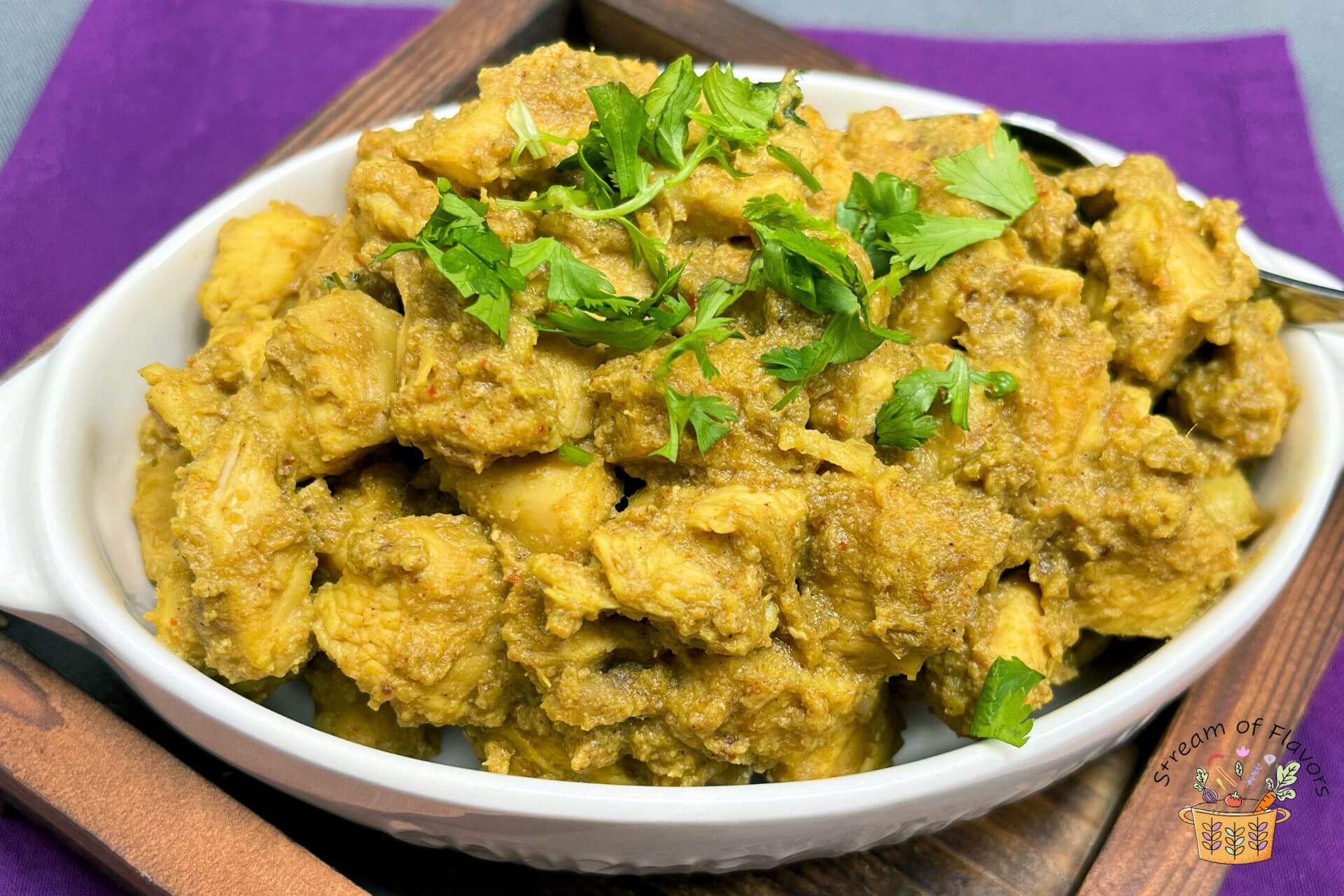
Ingredients:
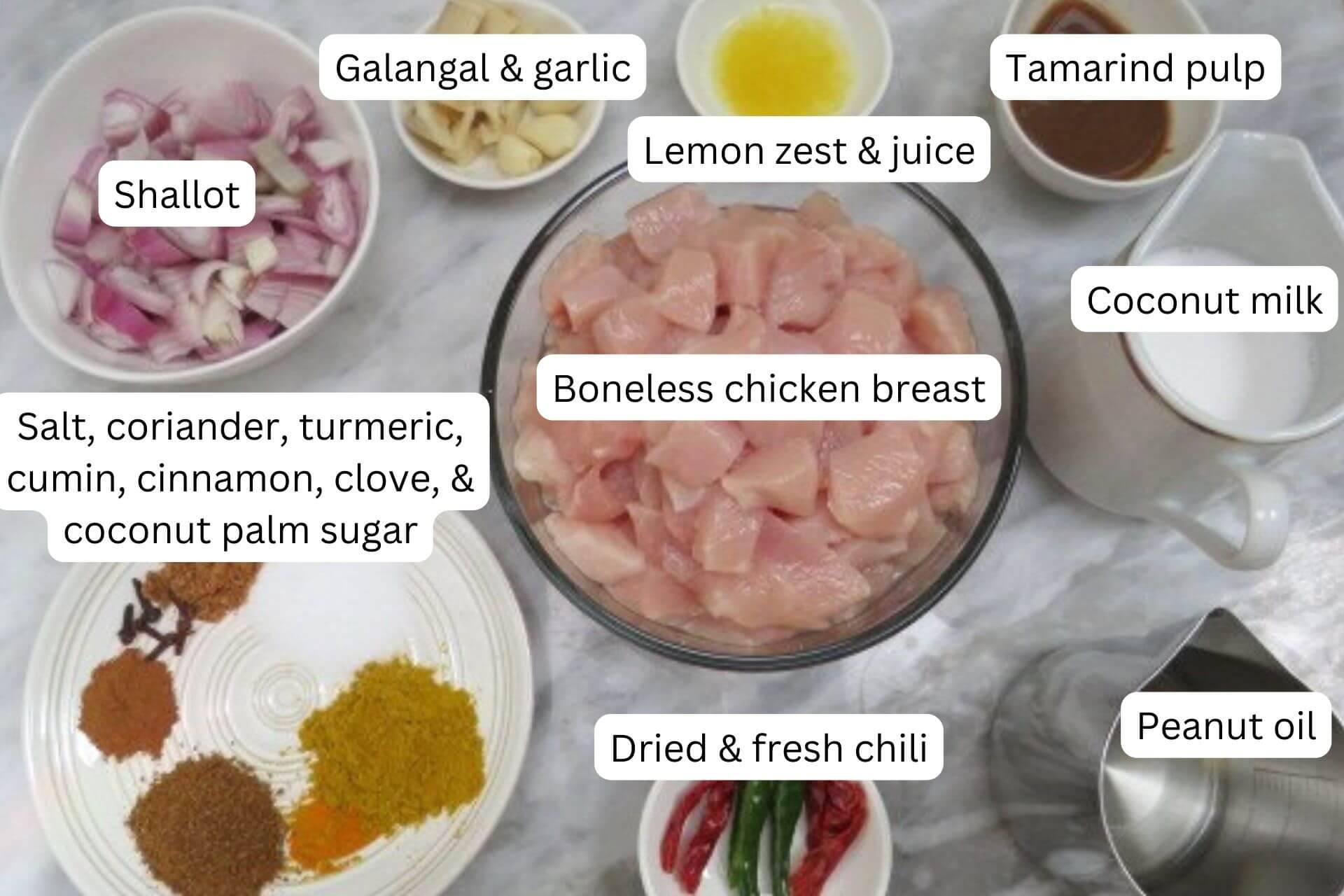
- Spice paste: galangal, garlic, shallot, chili, cinnamon powder, cumin powder, coriander powder, lemon juice and zest, salt, turmeric powder, cloves and a tablespoon of coconut milk for grinding
- Coconut milk: fresh coconut milk (substitute with canned unsweetened coconut milk)
- Tamarind pulp: fresh tamarind pulp (feel free to use readymade pulp)
- Sugar: coconut sugar – use dark brown sugar for a deep brownish hue.
Here are the step-by-step instructions on how to make this dish. Please refer to the recipe card for the measurements.
How to make the Chicken Rendang:
- Prepare the ingredients. Soak the ingredients in warm water for 5 minutes and grind them in a spice grinder to a smooth paste with one tablespoon of coconut milk. Heat a wok with the peanut oil, add the spice paste, and sauté for 1-2 minutes or until fragrant.
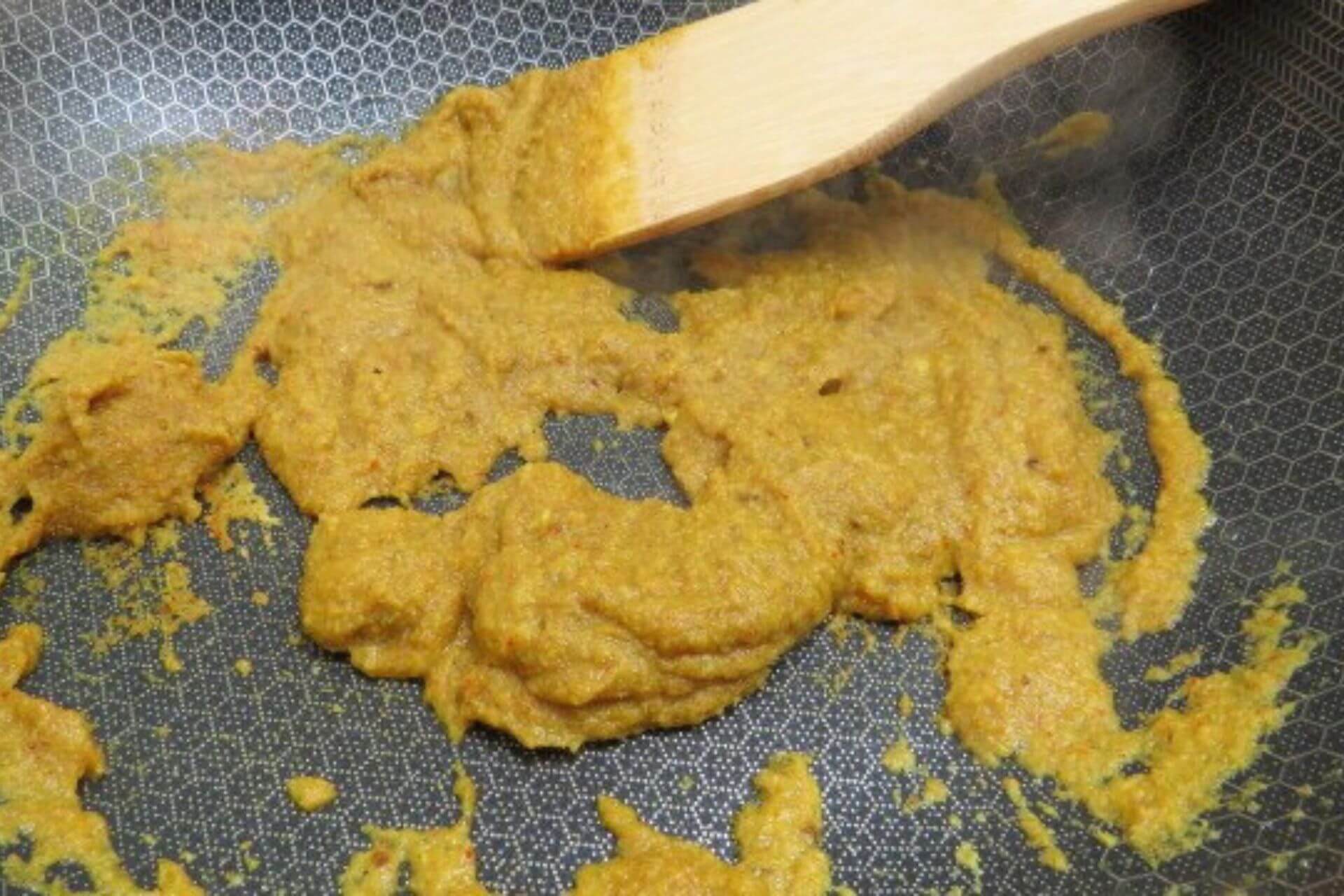
2. Add the chicken and coconut milk. Stir the wok occasionally to scoop the chicken pieces from the bottom and mix them gently.
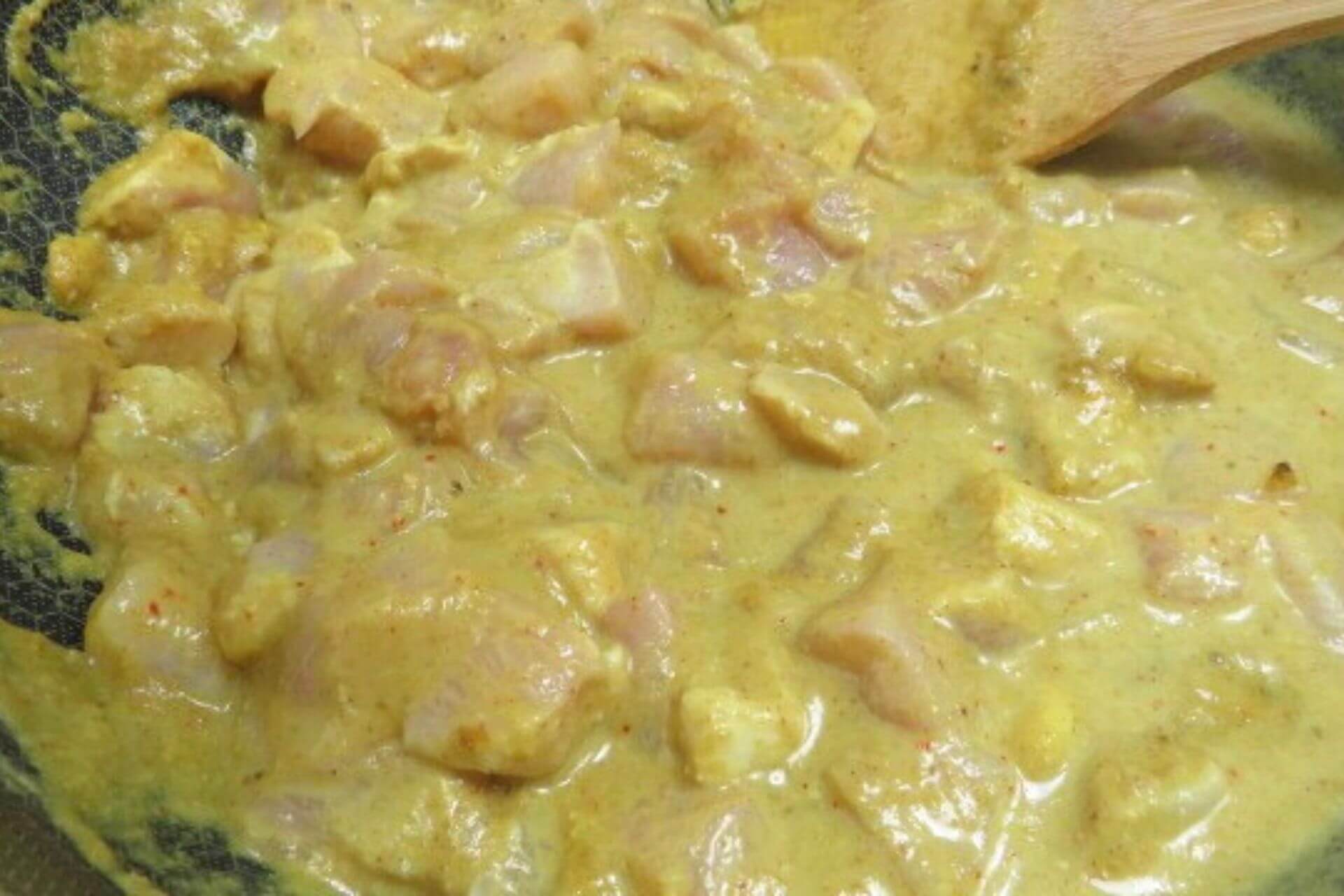
3. Cook on low heat for 30 minutes or until the chicken is cooked with the sauce becoming dry, coating the chicken. Add the coconut sugar and tamarind pulp, fry for 1-2 minutes, and turn off the heat.
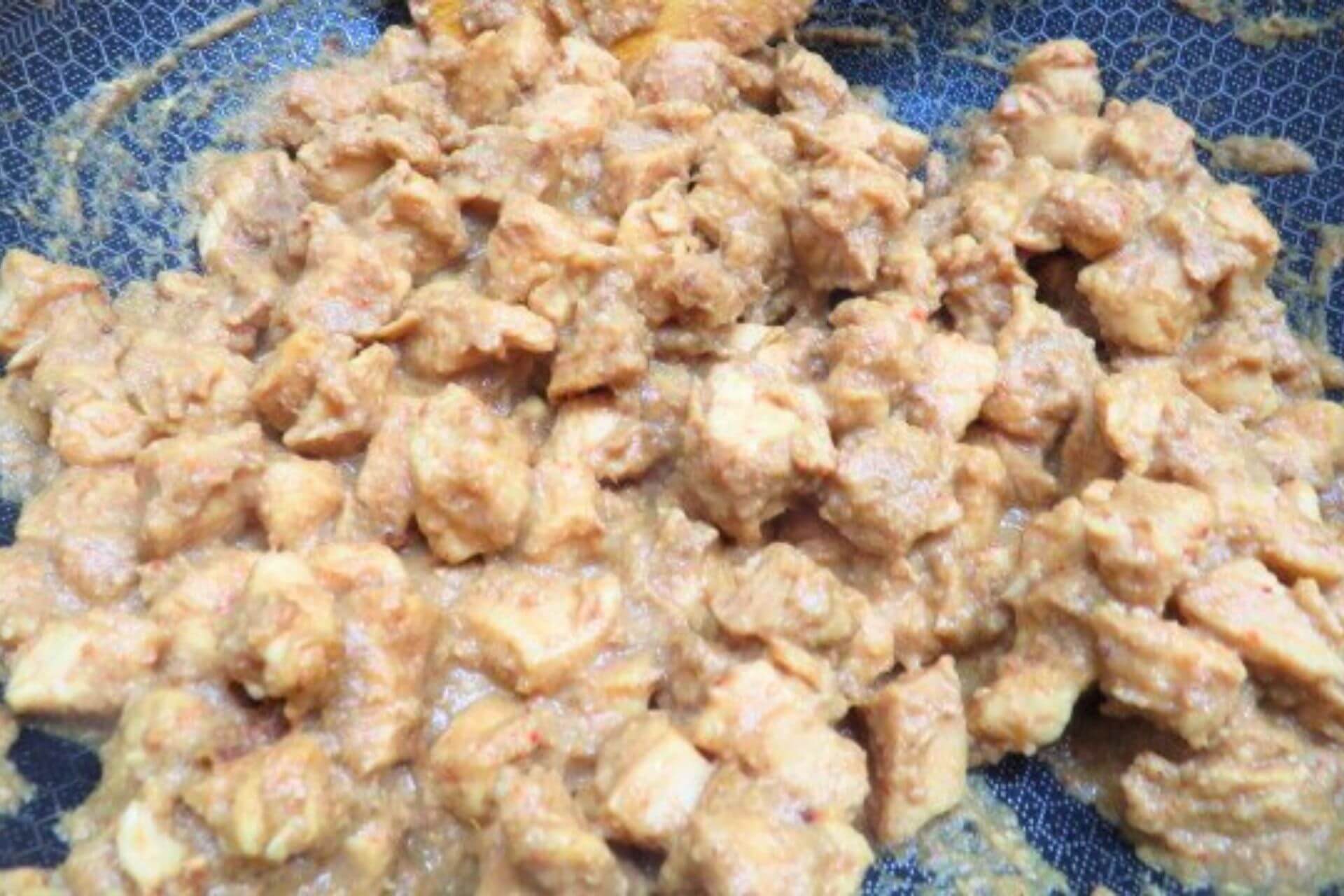
4. Garnish with cilantro or fried shallots and serve with steamed rice.

Tips:
- Please use dark brown sugar if you want a deep brownish hue. I used coconut sugar to get a golden-brown hue.
- If using a slow cooker or the slow cook mode in the instant pot, add the ingredients and let the dish cook for a few hours. The flavors will intensify with slow cooking.
- To prevent the coconut milk from separating, I used full-fat coconut milk. To maintain a homogeneously creamy consistency, I stirred the pot occasionally.
- If using a few chicken bones (drumsticks or thighs), sauté them for 8-10 minutes before adding the chicken breasts which cook faster than the bone-in pieces.
Serving suggestion:
I served the Chicken Rendang with Nasi Kuning or steamed rice. You can serve it with jasmine rice or basmati rice with a side of sliced cucumbers and garnish this dish with crispy fried shallots.
Storage:
Chicken Rendang can be made ahead of time and refrigerated for a week. Leftovers can be frozen in airtight freezer-safe containers for 3 months. To reheat, thaw the dish in the refrigerator the previous day and heat it gently in a saucepot with a little water.
Other Asian chicken recipes that you might like:
Chicken Rendang
Equipment
- Wok
Ingredients
For the spice paste:
- 2 shallot chopped
- 2 clove garlic
- 1 tbsp galangal chopped
- 2 green chili
- 2 dried red chili
- 1 tsp coriander powder
- 1 tsp cumin powder
- ¼ tsp turmeric powder
- ¼ tsp cinnamon powder
- 4 clove
- ½ tsp lemon zest
- 2 tsp lemon juice
- 1½ tsp salt
- 1 tbsp coconut milk
For the Chicken Rendang:
- 2 lbs chicken breast
- 1 tbsp peanut oil
- 1 cup coconut milk fresh
- ½ tsp coconut palm sugar
- 1 tbsp tamarind pulp
Instructions
How to make the Chicken Rendang:
- Prepare the ingredients. Soak the ingredients in warm water for 5 minutes and grind them in a spice grinder to a smooth paste with one tablespoon of coconut milk.
- Heat a wok with the peanut oil, add the spice paste and sauté for 1-2 minutes or until fragrant.
- Add the chicken and coconut milk. Stir the wok occasionally by scooping the chicken pieces from the bottom.
- Cook on low heat for 30 minutes or until the chicken is cooked and the sauce is dry, coating the chicken. Add the coconut sugar and tamarind pulp, fry for 1-2 minutes and turn off the heat.
- Garnish with cilantro or fried shallots and serve with steamed rice.
Video
Notes
- If using bone-in chicken pieces, cook them for 10 minutes before adding the boneless pieces. Please cut the chicken into bite-sized pieces to promote even cooking.
Nutrition


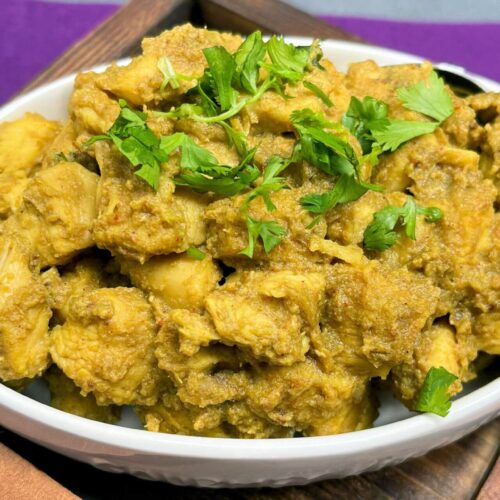
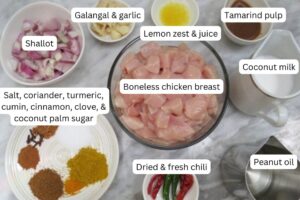
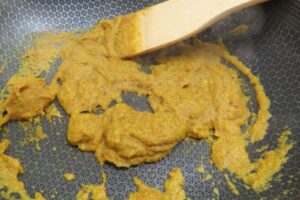
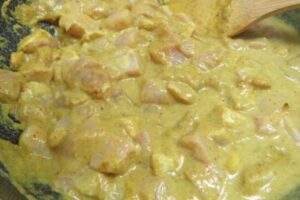
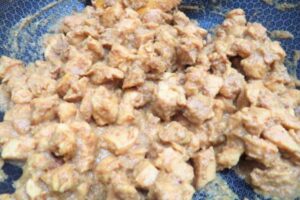
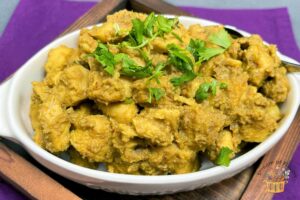




















0 Comments